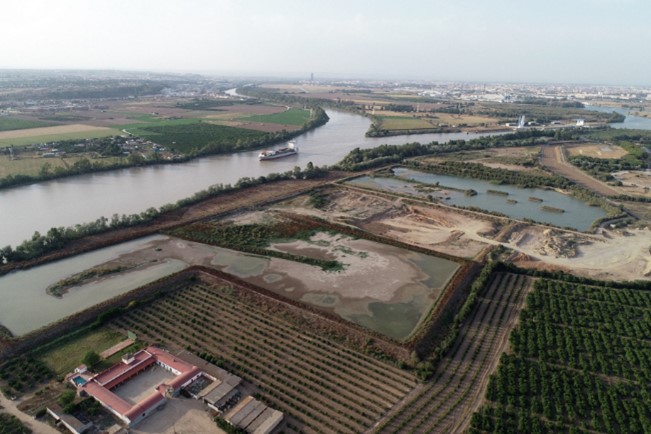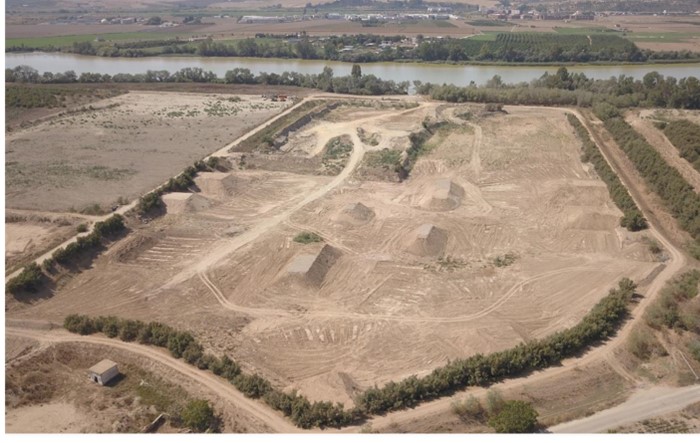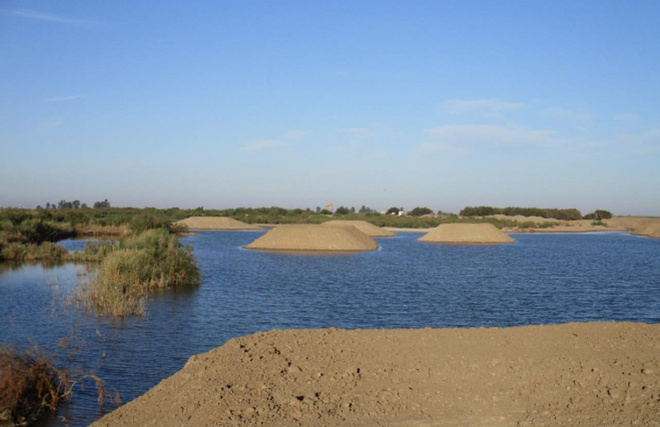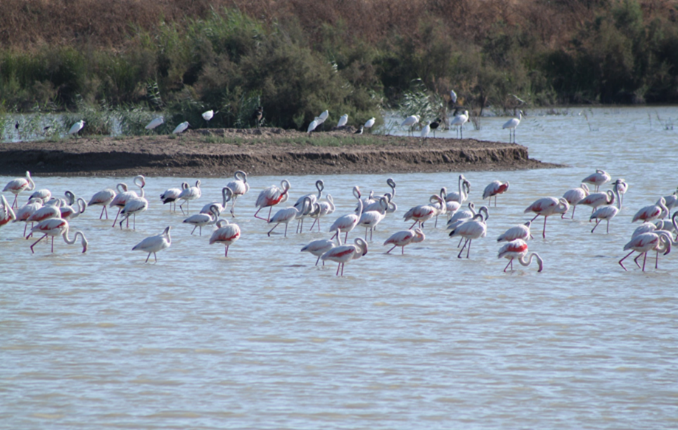Land-based confined disposal facility turned into a nesting area
|
The Port of Seville is the first Spanish port to harmonize sediment management activities, associated with maintenance dredging campaigns, with the creation of habitat that encourages the potential to develop and support a diverse number of aquatic birds and to generate alternative sites to the Doñana National Park. Dredged sediments from the navigation channel of the River Guadalquivir are regularly deposited within land-based confined disposal facilities. The project has consisted in adapting those disposal facilities by creating islets and dikes inside. The water level within the dikes were maintained without depending on the hydrological cycle. This way, birds are able to pick alternative wetlands at times of low rainfall, during spring and summer seasons. So far in 2020 nine species have successfully nested there, in the disposal facilities. The ferruginous duck, a very rare species listed in the National Catalogue of Species Threatened with Extinction, is among them. Other breeding species have also been observed, such as the black-winged stilt, the pied avocet, the Eurasian coot, the mallard, the red-crested pochard, the little grebe, the common moorhen and the little-ringed plover. Greater presence of flamingoes, purple gallinules, glossy ibis, Eurasian spoonbills and purple herons, which made use of the area for feeding, have been recorded, as well as many species of wintering waders and some other species of waterfowl. The Port of Seville has already achieved the first results of his research in the Guadalquivir estuary by adopting the Working with Nature philosophy. The Port Authority of Seville (APS) and the Spanish National Research Council (CSIC) have recorded a total of 52 species of aquatic birds in the Port of Seville’s confined disposal facilities. Those species have made good use of the new natural space for refuge, feeding and reproduction after their adaptation built during the 2019 maintenance dredging campaign. Four of the total registered bird species are threatened species in danger of extinction: the ferruginous duck, the marbled duck, the squacco heron and the red-knobbed coot. One of these is vulnerable: the western osprey. |
Graphical information:




References/web links
- http://portal.apsevilla.com/
- http://www.ebd.csic.es/inicio
- https://www.greenport.com/news101/europe/sediment-dumps-used-as-bird-habitat
- https://www.diariodesevilla.es/sevilla/vaciaderos-Puerto-Sevilla-atraen-52-especies-aves-acuaticas_0_1478852652.html
- https://sevilla.abc.es/sevilla/sevi-puerto-sevilla-reserva-aves-acuaticas-202007011336_noticia.html
- https://www.elmundo.es/andalucia/2020/06/07/5edbc64ffc6c83962b8b465e.html
- https://www.revistaquercus.es/noticia/7441/articulos-de-fondo/dragados-y-aves:-el-caso-de-los-vaciaderos-del-bajo-guadalquivir.html
- https://fundaciondescubre.es/noticias/censan-mas-de-50-especies-de-aves-en-vaciaderos-del-puerto-de-sevilla-junto-a-donana-2/
- d-andalucia.csic.es/es/noticia/ebdcsic-potencia-mas-50-especies-aves-en-vaciaderos-puerto-sevilla-junto-donana